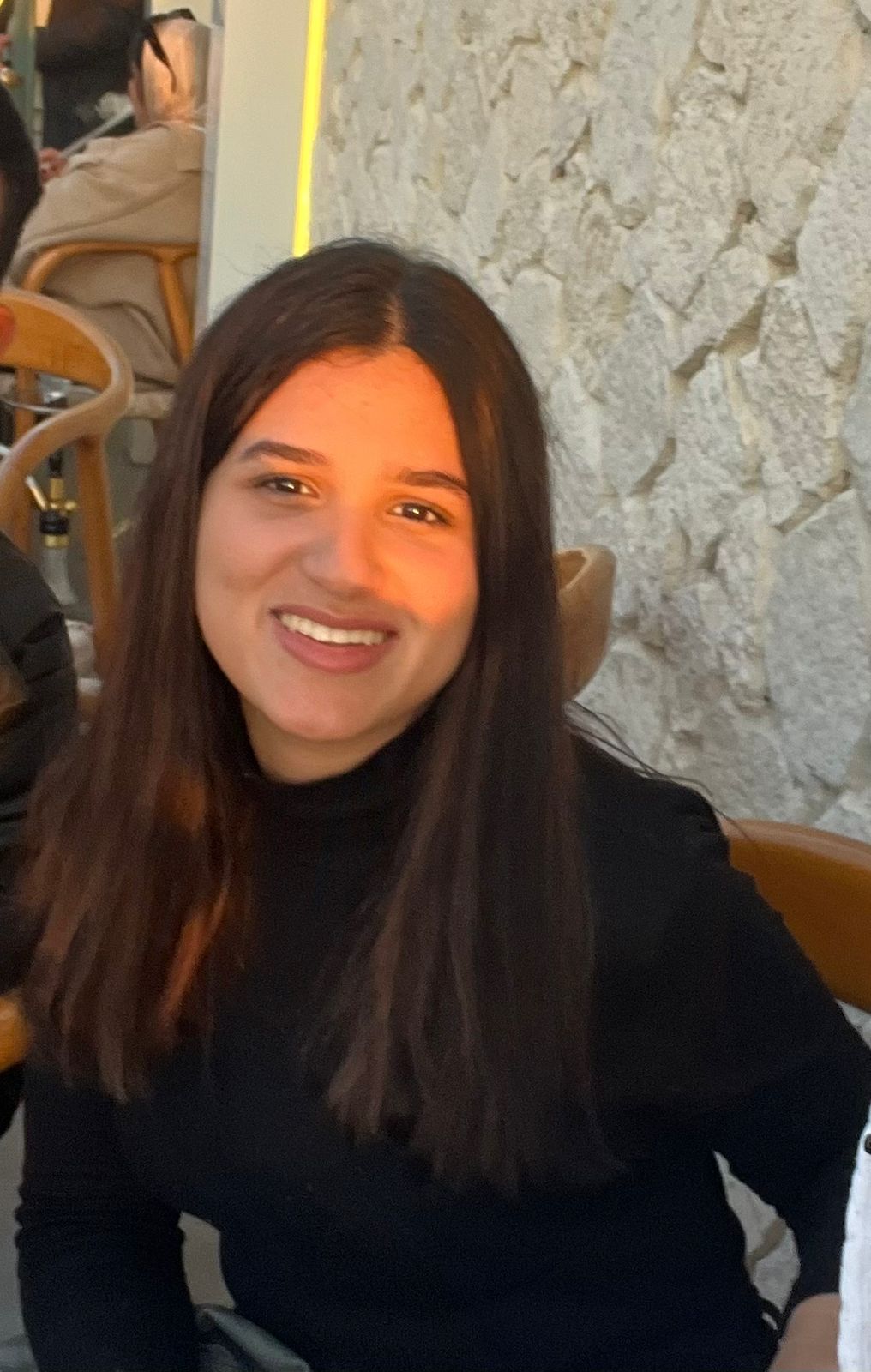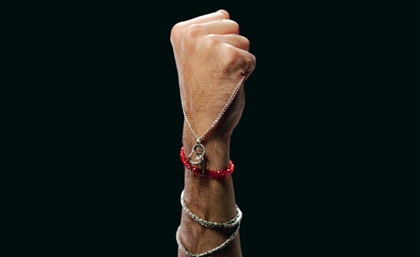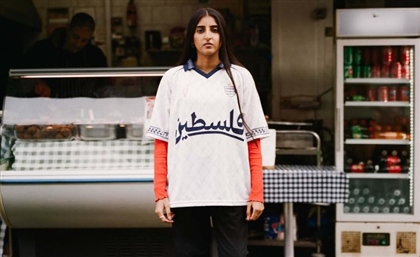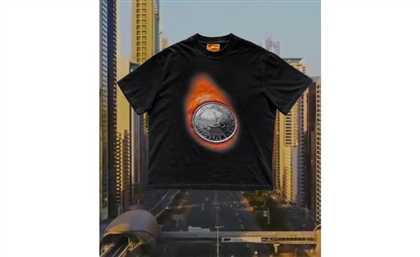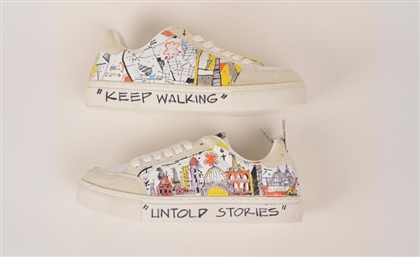Egypt's Nakshe Studio Brings Vintage Fabrics to Modern Wardrobes
Sustainability and novelty is the bedrock of Nakshe, a brand that feels like a quiet, brilliant rebellion against the homogenous stream of fast fashion.

Kawthar El Naggar’s proudest moment came out of her grandmother’s treasure trove: a fabric rich with history, tucked away for decades. Too special to use, too beautiful to forget. This is not a metaphor in the slightest; it is, however, the foundation of a dress.
For Kawthar - the founder of the fiercely original label Nakshe—that inherited textile, a black-and-print piece passed from her grandmother to her mother, became a sartorial tribute. “My mum trusted me; she believed I could create something interesting out of it,” she says, her voice warm. The resulting tunic, the Trophy Dress, was a hit. More importantly, it was a blueprint. It confirmed a hunch Kawthar had always had: that the most compelling fashion isn’t just worn, it’s lived in, layered with personal and cultural history.
This belief is the bedrock of Nakshe, a brand that feels like a quiet, brilliant rebellion against the homogenous stream of fast fashion. Its name, drawn from Arabic, Turkish, and Persian, simply means “embroidery” or “design.” In practice, though, Nakshe is a globe-trotting endeavour to unearth extraordinary, often handmade textiles and rework them into contemporary silhouettes. Think vintage Suzani embroidery from Central Asia reborn as a sharp, modern jacket, or sumptuous Italian brocade cut into effortless wide-leg pants. These are conversation starters. “For you to buy something from my brand,” Kawthar admits with a laugh, “you kind of have to have quite a bold taste.”-438d9382-321a-4ae7-9479-8577aedcd73d.jpg) Kawthar’s own taste was forged in Alexandria, Egypt, and polished in London. She pursued a sensible business degree at King’s College London before following her heart to the Condé Nast College for a master’s in fashion communication. A stint on the fashion team at Harper’s Bazaar Arabia in Dubai offered a masterclass in high-octane glamour and the inner workings of the industry. Still, the pull to create something entirely her own - a pure expression of that bold, Alexandrian-Londoner-Dubai spirit - proved irresistible.
Kawthar’s own taste was forged in Alexandria, Egypt, and polished in London. She pursued a sensible business degree at King’s College London before following her heart to the Condé Nast College for a master’s in fashion communication. A stint on the fashion team at Harper’s Bazaar Arabia in Dubai offered a masterclass in high-octane glamour and the inner workings of the industry. Still, the pull to create something entirely her own - a pure expression of that bold, Alexandrian-Londoner-Dubai spirit - proved irresistible.
“I come from a background that’s pretty artistic,” she explains. Her grandmother was an antique dealer, and her mother actively encouraged her sartorial experiments. “I would always choose very interesting and different fabrics and textiles… in my community, I would wear the weirdest pieces.” Nakshe is that personal aesthetic fully realised: made for the woman who views getting dressed as an act of discovery.
The most radical part of Nakshe’s business model is its deliberate scarcity. In a world obsessed with scale, Pinterest trends, and micro-seasons, Kawthar is committed to the limited run. Most pieces are one-of-a-kind or produced in tiny quantities. This isn’t a marketing gimmick; it’s the natural result of her material-first approach and the intricacy of handcrafted techniques. “I connected with a lot of people from different countries to source different fabrics,” she says. These are not textiles you can order by the kilometre - they are finite, often crafted by female artisans. “When you’re wearing the piece you buy from me, you feel like it’s limited, and you know you’re not going to find random people wearing it.”
This creates what she cheerfully calls “an energy” within her growing community. Drops, announced via Instagram, require swift action. There’s a palpable thrill to the chase. “My clients know they have to act fast,” she says, noting the slight frustration-turned-excitement when pieces sell out within minutes. It turns a purchase into a coup - the fashion equivalent of securing a golden ticket.
Of course, rarity comes with a higher price point, a fact Kawthar is transparent about. The brand is registered in Dubai, and the costs reflect international sourcing and artisanal labour. But for her customers - a scattered tribe of bold dressers from Cairo to Riyadh to London - the value is self-evident. Her first collection, launched informally through family and friends, sold out so quickly she didn’t even have time to take professional photographs. The appeal lies in the weight of a hand-embroidered panel, the story behind each print, and the certainty that you won’t see your outfit duplicated across the room.-993ce23e-5259-4c7a-87dc-6e2a487bbe17.jpg) The future for Nakshe is intentionally, and fittingly, curated. There’s no sprawling flagship store on the horizon. Kawthar’s vision is nomadic and communal - pop-ups at select events and concept stores from the Gulf to the U.S., each placement chosen for the right audience and atmosphere. “I want to be joining more pop-ups, doing more collaborations,” she says. It’s about recreating the same spark of discovery she feels when she unearths a remarkable fabric.
The future for Nakshe is intentionally, and fittingly, curated. There’s no sprawling flagship store on the horizon. Kawthar’s vision is nomadic and communal - pop-ups at select events and concept stores from the Gulf to the U.S., each placement chosen for the right audience and atmosphere. “I want to be joining more pop-ups, doing more collaborations,” she says. It’s about recreating the same spark of discovery she feels when she unearths a remarkable fabric.
Ultimately, Nakshe feels less like a cultural exchange programme for your wardrobe. Each piece is a passport stamp - a collaboration with an artisan you’ll never meet - and a fragment of Kawthar’s own transcontinental story. It’s fashion with a built-in history, and a future just as exclusive, exciting, and singular as the clothes themselves. As Kawthar puts it simply, “I really like rarity. It’s part of the magic.”
And in an overcrowded market, magic is the rarest commodity of all.
- Previous Article Cinematic Season Style Guide with GFF's Salma Malhas & Hayat Aljowaily
- Next Article Sylwia Nazzal Designs for a Body That Demands Space

